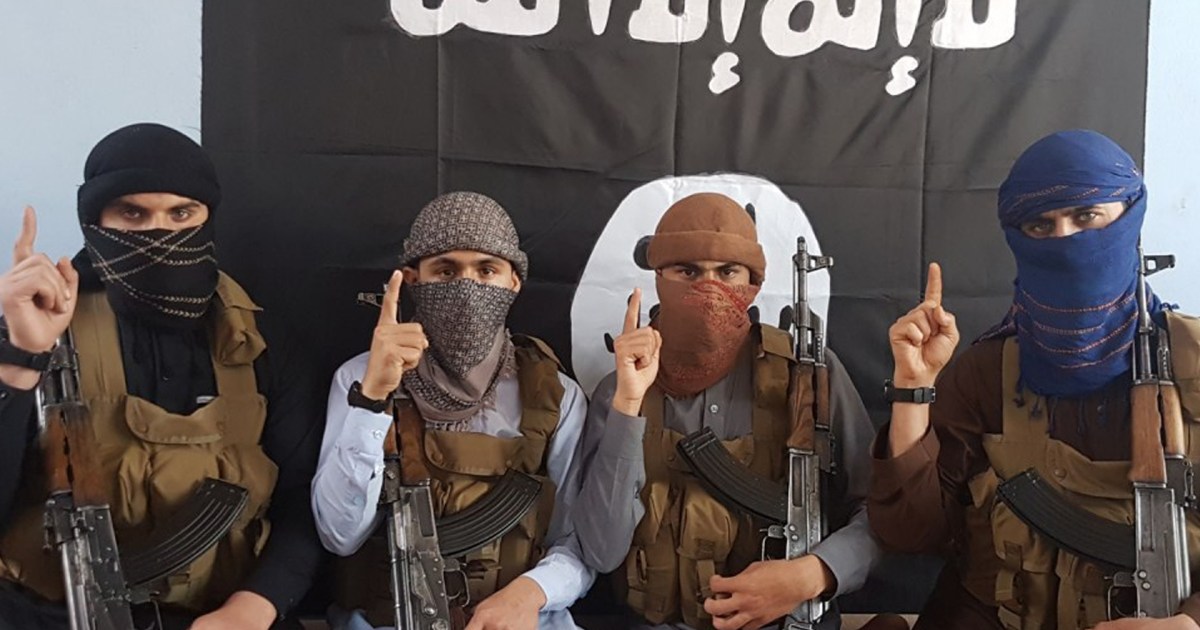Shortly after the Islamic State declared a "caliphate" in Iraq and Syria in 2014, former members of the Pakistani Taliban declared their allegiance to the group's leader, Abu Bakr al-Baghdadi, and were later joined by Afghans and Taliban defectors.
In early 2015, the Islamic State recognized the establishment of a province in "Khorasan", the old name given to a region that includes parts of present-day Afghanistan, Pakistan, Iran and Central Asia.
And the "Islamic State of Iraq and the Levant-Khorasan Province" established a bridgehead in 2015 in the mountainous Achin region, in Nangarhar Province (eastern Afghanistan), and it is the only one that managed to establish a stable presence, as well as in the neighboring Kunar region.
In all other areas, the group has clashed with the Taliban, although it has managed to form sleeper cells elsewhere in Afghanistan, especially in the capital, and in Pakistan, according to the United Nations.
According to the latest estimates, the number of its fighters is several thousand, according to a report to the UN Security Council issued last July.
What kind of operations did ISIS carry out?
The "Islamic State of Khorasan Province" has claimed responsibility for some of the deadliest attacks in recent years in Afghanistan and Pakistan, in the form of the slaughter of civilians in mosques, hospitals, and public places.
In August 2019, the group claimed responsibility for an attack on Shiite Muslims at a wedding party in Kabul, killing 91 people.
An attack in May 2020 targeting a maternity hospital in a predominantly Shiite neighborhood of Kabul killed 25 people, including 16 mothers and an infant.
What is the relationship between ISIS and the Taliban?
Although they are two armed Sunni groups, they differ in doctrine and strategy, and compete over the embodiment of jihad.
As evidence of the intense hostility between them, statements by the Islamic State described the Taliban as infidels.
The "Islamic State-Khorasan Province" faced repression by the Taliban, targeting its defectors, and was unable to expand its territory, unlike the success achieved by the organization in Iraq and Syria.
In 2019, the government army in Afghanistan - after joint operations with the United States - announced its defeat in Nangarhar Province (east).
According to US and United Nations estimates, the "Islamic State-Khorasan Province" has since been operating through its sleeper cells in cities, in order to launch major attacks.
What is the reaction of the organization to the return of the Taliban?
The Islamic State strongly criticized the agreement concluded in February 2020 in Doha between Washington and the Taliban, which provides for the withdrawal of US and foreign forces from Afghanistan, accusing the movement of retreating from the jihadist cause.
After entering Kabul and assuming power on August 15, the Taliban received congratulations from many groups described as jihadist, but ISIS is not among them, but observers expected the organization to benefit from the collapse in Afghanistan.
Mr. Q - a Western specialist in ISIS affairs, who publishes his research on Twitter under this pseudonym - indicated that 216 attacks were carried out by the "Islamic State-Khorasan Province" between January 1 and August 11, compared to 34 attack during the same period last year.
"This makes Afghanistan one of the most active provinces of ISIS," he told AFP last week. "Not everything is directly related to the US withdrawal, but the Taliban victory provides an outlet for ISIS-K."
For his part, Colin Clark, director of the Soufan Center for Geopolitical Research in New York, admitted that "the collapse of the Afghan army is a strange reminder of what we saw in Iraq in 2011. I fear that the situation will repeat in Afghanistan, with the development of ISIS and the resurgence of al-Qaeda."

